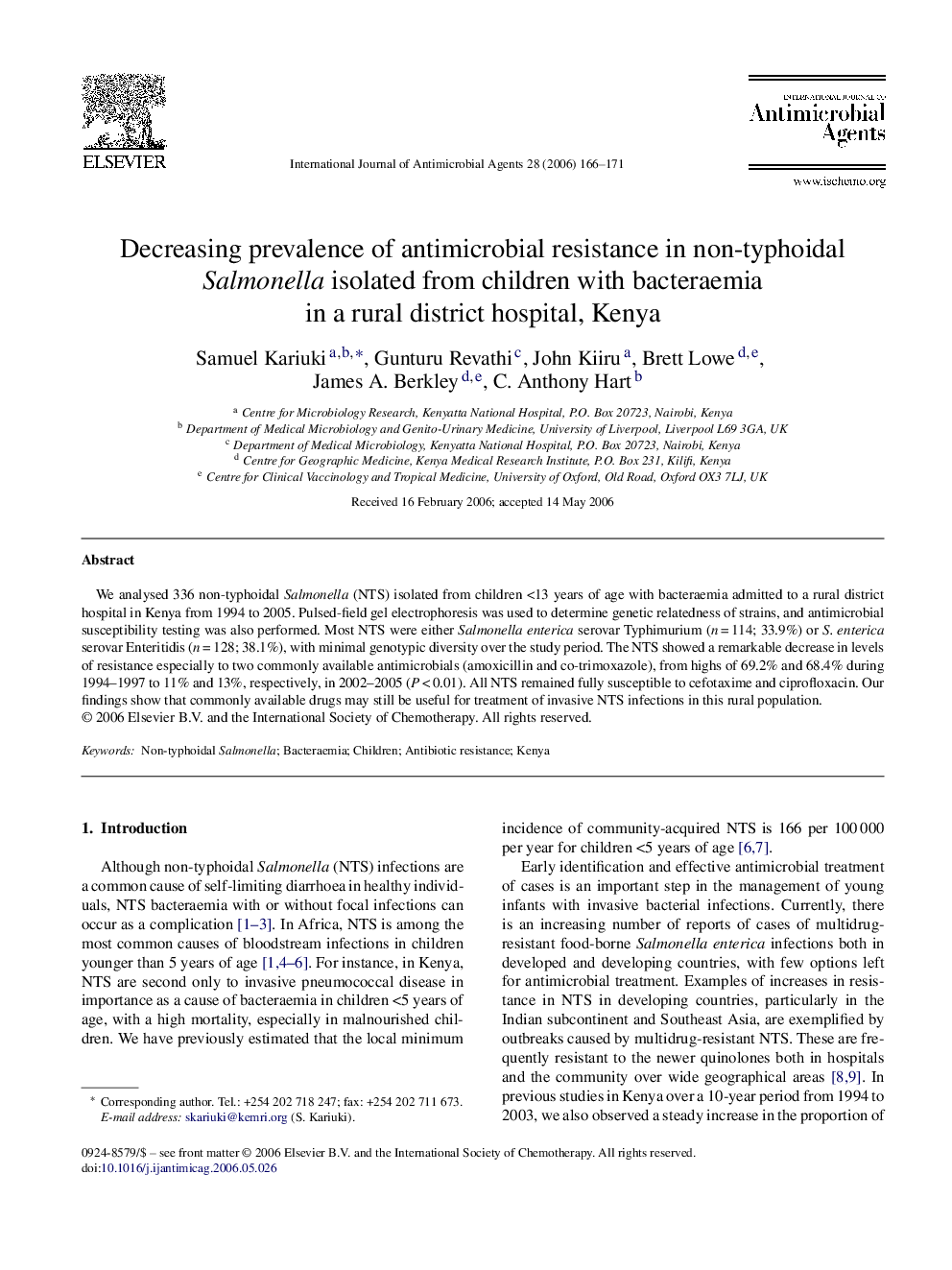| Article ID | Journal | Published Year | Pages | File Type |
|---|---|---|---|---|
| 3361354 | International Journal of Antimicrobial Agents | 2006 | 6 Pages |
We analysed 336 non-typhoidal Salmonella (NTS) isolated from children <13 years of age with bacteraemia admitted to a rural district hospital in Kenya from 1994 to 2005. Pulsed-field gel electrophoresis was used to determine genetic relatedness of strains, and antimicrobial susceptibility testing was also performed. Most NTS were either Salmonella enterica serovar Typhimurium (n = 114; 33.9%) or S. enterica serovar Enteritidis (n = 128; 38.1%), with minimal genotypic diversity over the study period. The NTS showed a remarkable decrease in levels of resistance especially to two commonly available antimicrobials (amoxicillin and co-trimoxazole), from highs of 69.2% and 68.4% during 1994–1997 to 11% and 13%, respectively, in 2002–2005 (P < 0.01). All NTS remained fully susceptible to cefotaxime and ciprofloxacin. Our findings show that commonly available drugs may still be useful for treatment of invasive NTS infections in this rural population.
